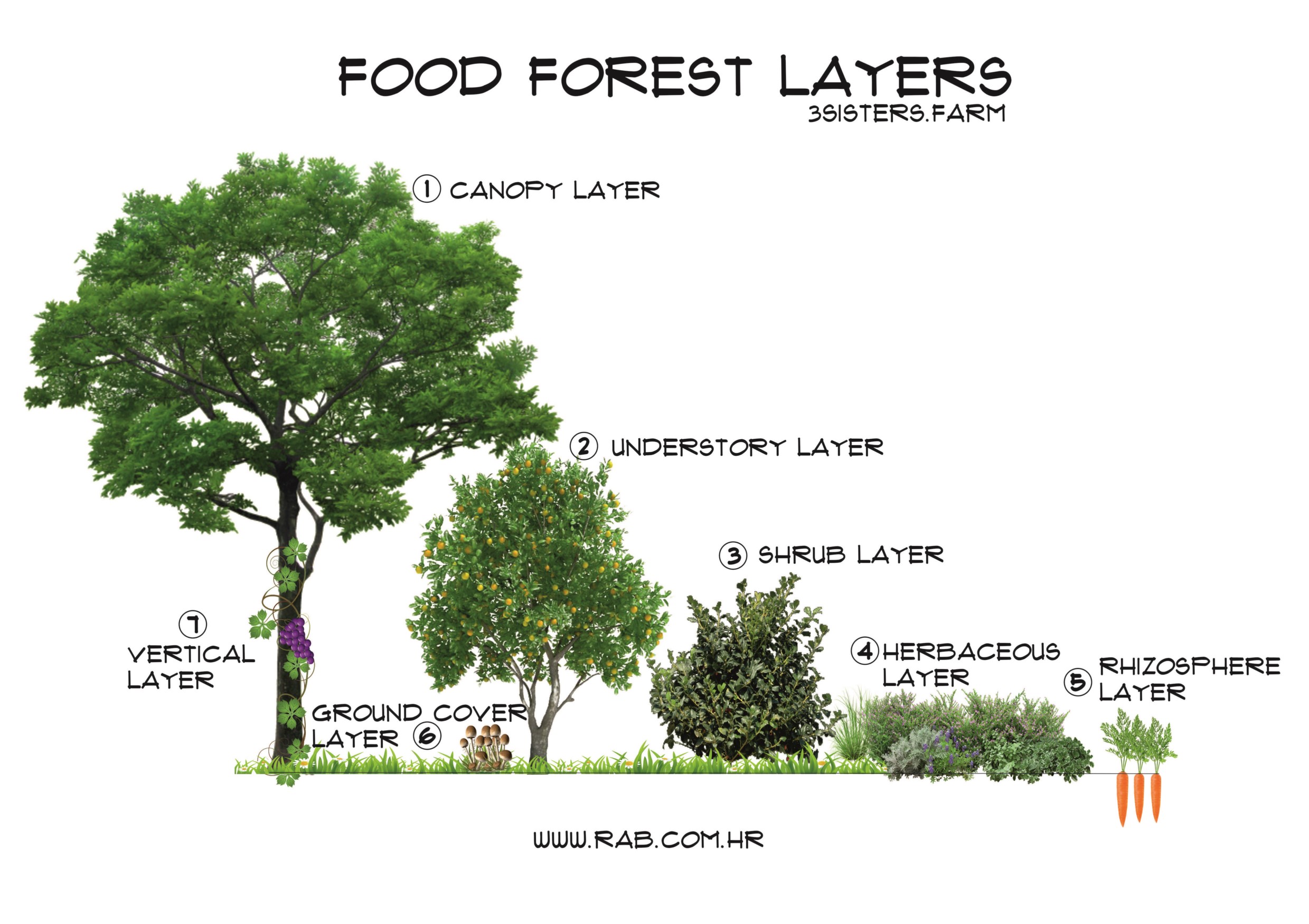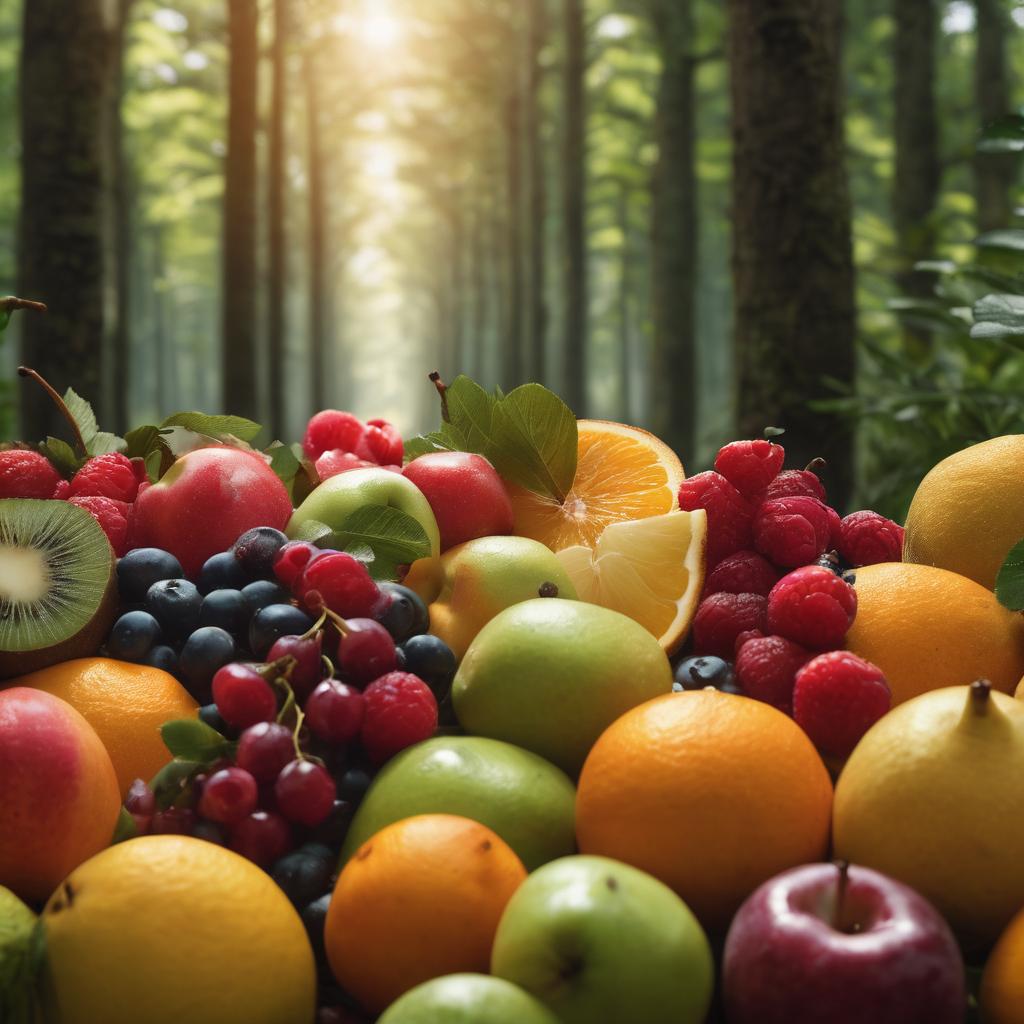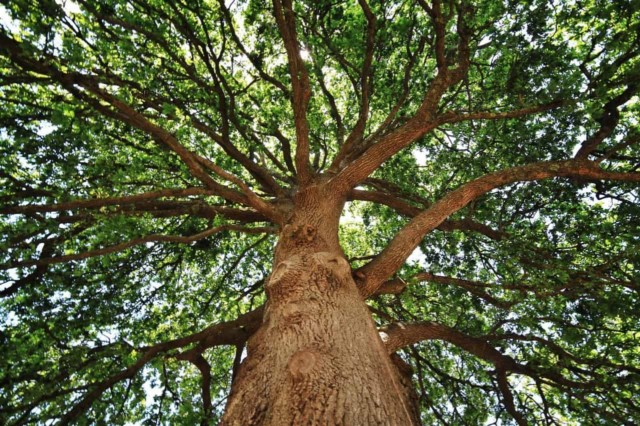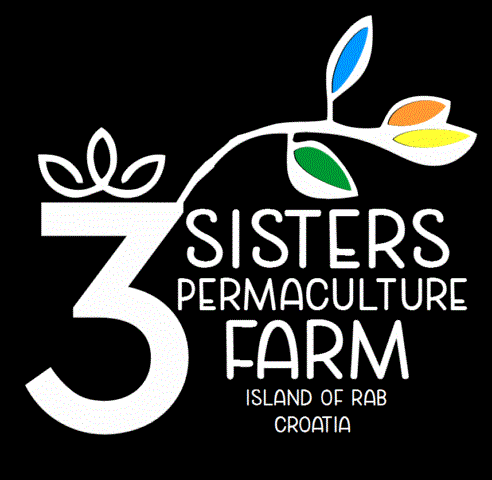The Food Forest
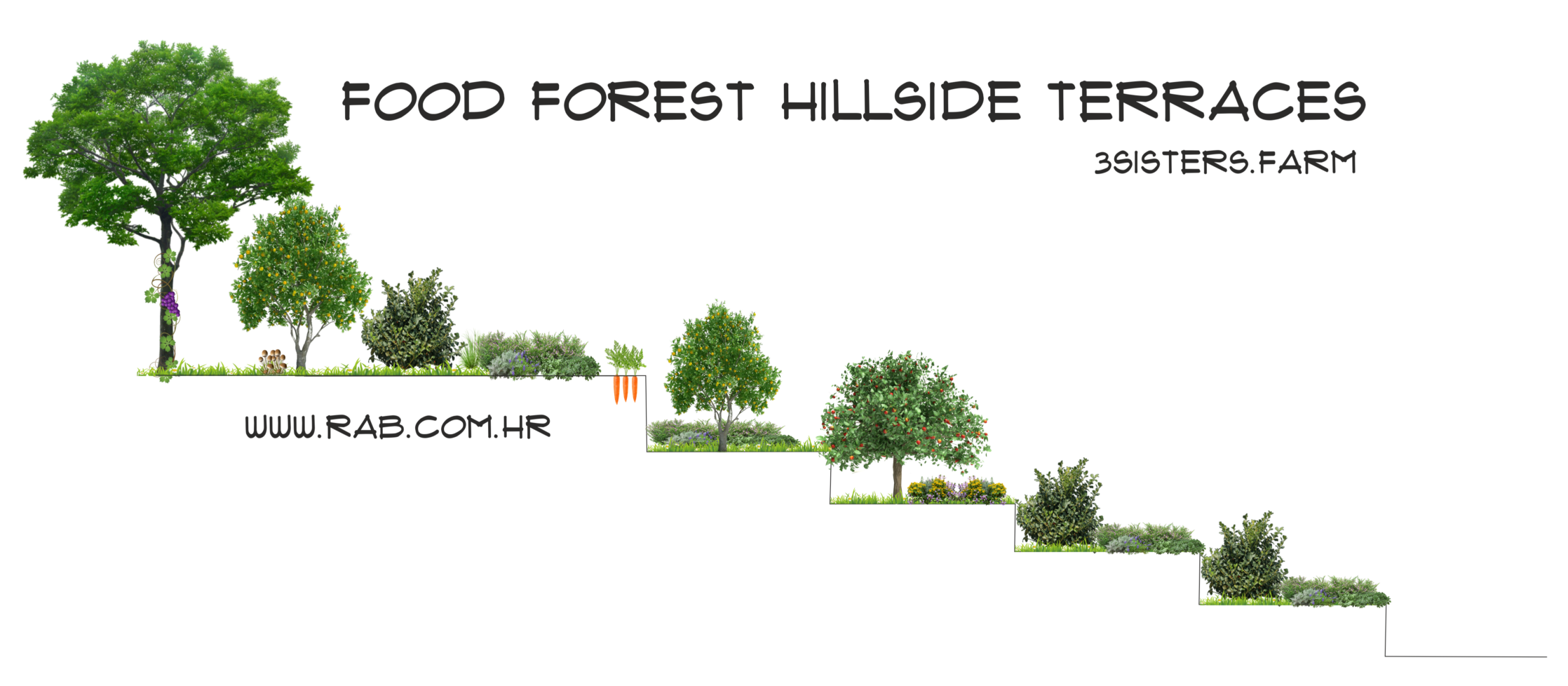
Our vision for the food forest extends beyond a mere plantation; we are crafting a landscape that invites exploration and relaxation.
A food forest, also known as a forest garden or edible forest, is a designed agroecosystem that mimics the structure and function of a natural forest while primarily consisting of edible plants.
The Concept
The concept is rooted in permaculture principles and aims to create a sustainable, self-sufficient, and diverse ecosystem that provides a variety of fruits, nuts, vegetables, herbs, and other edible plants.
In a food forest, plants are strategically chosen and arranged to create mutually beneficial relationships.
The different layers of vegetation, such as tall canopy trees, understory trees, shrubs, herbaceous plants, ground covers, and root crops, mimic the layers found in a natural forest. This layered approach maximizes the use of space and resources, promotes biodiversity, and enhances overall ecosystem resilience.
The Food Forest consists of seven layers:
1: Canopy layer (e.g., large fruit and nut trees)
2: Sub-Canopy/Understory or the low tree layer (small fruit trees)
3: Shrub layer (e.g., currants and berries)
4: Herb layer (e.g., mint, sage, and other perennials)
5: Rhizosphere layer - the roots (e.g. garlic, artichokes, beets and carrots)
6: Ground cover layer (e.g. strawberries and mushrooms)
7: Vertical layer/vines & climbers (e.g. grapes, kiwi,)
+ Mycelium layer
Plan & Position
Project Description
Our envisioned food forest is strategically situated in the elevated section of our farm, characterized by sloping terrain adorned with pre-existing dry stone walls and terraces—a testament to its previous use for grape cultivation.
This unique topography affords us ample opportunities to unleash our creativity in design, allowing for the cultivation of an extensive variety of small fruit trees and shrubs. Spanning an expansive 5,500 square meters, with the potential for expansion up to 7,000 square meters, this section of our land currently boasts native shrubs, alongside a scattering of oaks and pines. While a significant portion of these indigenous plants will be retained for landscaping purposes, some will be carefully removed and composted to make way for our flourishing food forest.
Our vision for the food forest extends beyond a mere plantation; we are crafting a landscape that invites exploration and relaxation. Paths, winding through the lush greenery, will offer tranquil spaces adorned with wooden chairs and deck chairs for moments of repose. Additionally, these paths will serve as nature trails, enriched with information boards, providing visitors with insights into the diverse flora that thrives in our food forest.
In terms of biodiversity, our ambitious plans include the planting of over 500 fruit trees, 800 shrubs, 200 vines, several thousand perennials, a few hundred root plants, and an array of ground covers. This deliberate selection reflects our commitment not only to creating a thriving food source but also to nurturing an ecosystem that harmonizes with the natural surroundings.
As we embark on this journey to establish a vibrant food forest, we are mindful of the delicate balance between preservation and cultivation, aiming to transform this part of our farm into a haven where nature's bounty and human enjoyment coexist seamlessly.
Layers & Details
1 : Canopy Layer
©️David Burke
More than 500 fruit trees will be planted in our food forest + 400 trees across the property.
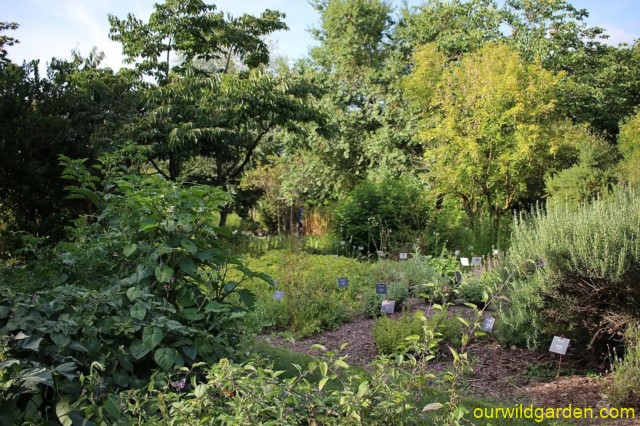
2 : Understory Layer
3 : Shrub Layer
800 + plants of shrubs -Vitamins, minerals, and antioxidants.
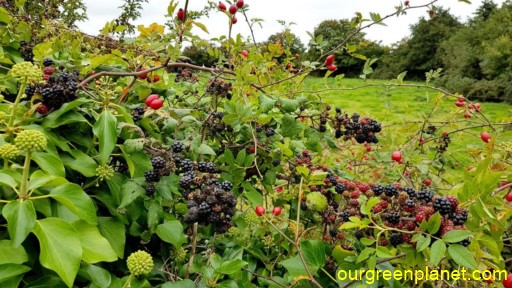
A place to retreat in the outdoor oasis.
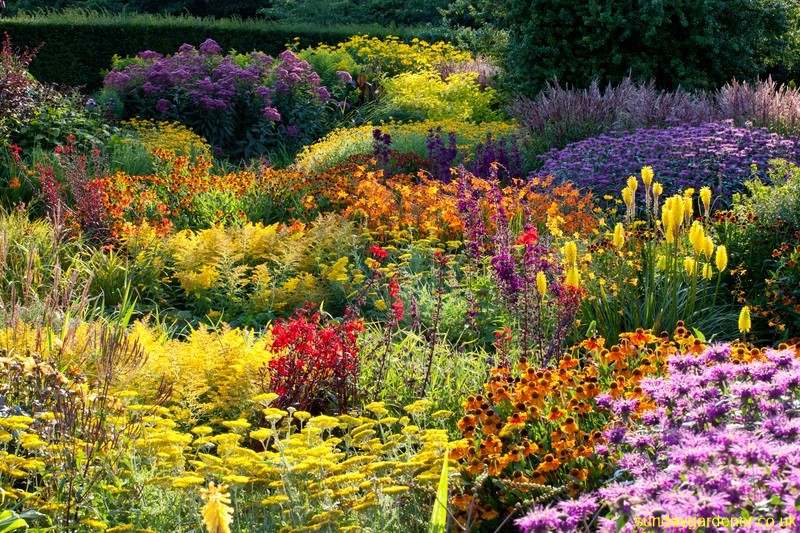
4 : Herbaceous Layer
5 : Root Layer
The rhizosphere is the area of the soil that surrounds the plant roots.
It is the most biologically active layer of the soil, populated by microorganisms that interact with and benefit from the chemicals released by plant roots.
There are more microorganisms in a teaspoon of soil than there are people on earth; the rhizosphere can host 1000-2000 times that amount, so it is heavily populated with microbial life.
Here we plant root vegetables such as artichokes, carrots, radishes, lettuce, onions, garlic, beets and others.
The most active layer. Perennial and annual edible plants heaven.
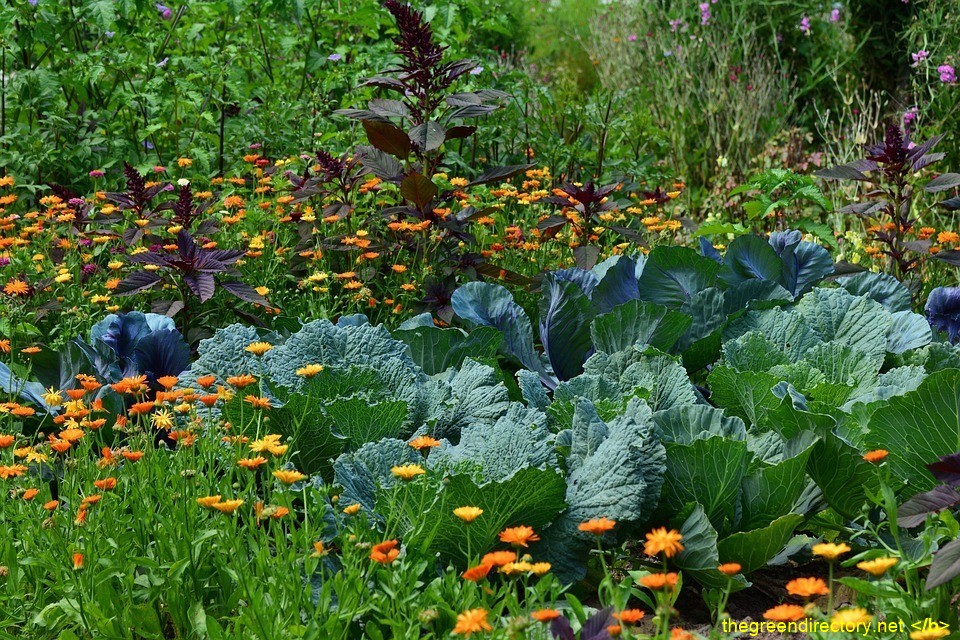
Wild strawberries, wild garlic, clover, thyme, oregano, mints, lucerne, herbal teas...
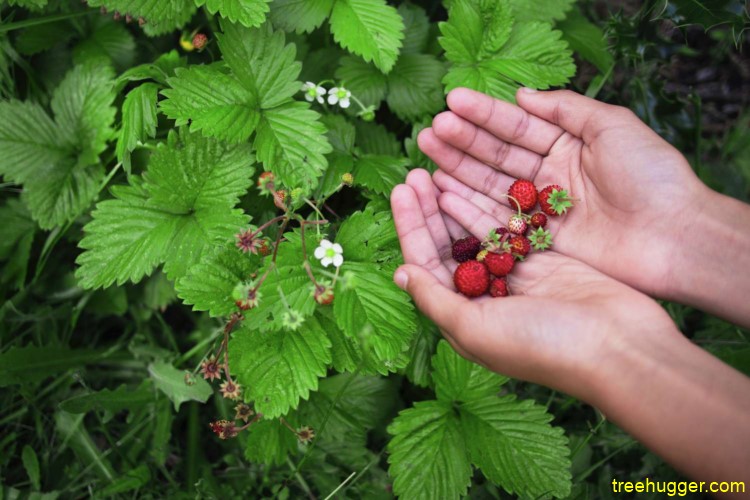
6 : Ground Cover Layer
This layer consists of low-growing plants that form a living mulch layer that protects the soil and inhibits weed growth.
It protects the soil from sun, wind, and rain damage, suppresses weed growth, and provides a habitat for insect species.
Wild strawberries, wild garlic, clover, lungwort, thyme, oregano, mint, alfalfa, herbal teas and others.
Ground cover plants have many benefits. They can help prevent soil erosion by holding the soil in place with their roots, and they can also help retain moisture in the soil by shading it from the sun. Ground cover plants can also improve the appearance of a landscape by providing a uniform, low-growing carpet of foliage.
In addition to their functional and aesthetic benefits, ground cover plants can also have ecological benefits. They can provide habitat for small animals and insects, and they can also help support biodiversity by creating a diverse range of microhabitats within a landscape..
7 : Vine Layer
Sometimes referred to as the horizontal layer.
Typically, plants in this layer grow vigorously during the season, then die and do not regrow until the next year.
Most effort is put into making this layer more visually appealing than the other layers.
The plants in the vine layer are adapted to use the species in the other layers for support.
Here are some examples of what we will plant. Some grape varieties, kiwi, passiflora (maypop), raspberries, beans, roses, jasmine, some blackberry varieties, honeysuckle, wisteria, chickpea, clematis, cucumber, mashu, melon, pumpkin, Caucasian spinach and even hops so we can make beer :-)
The most visually appealing layer
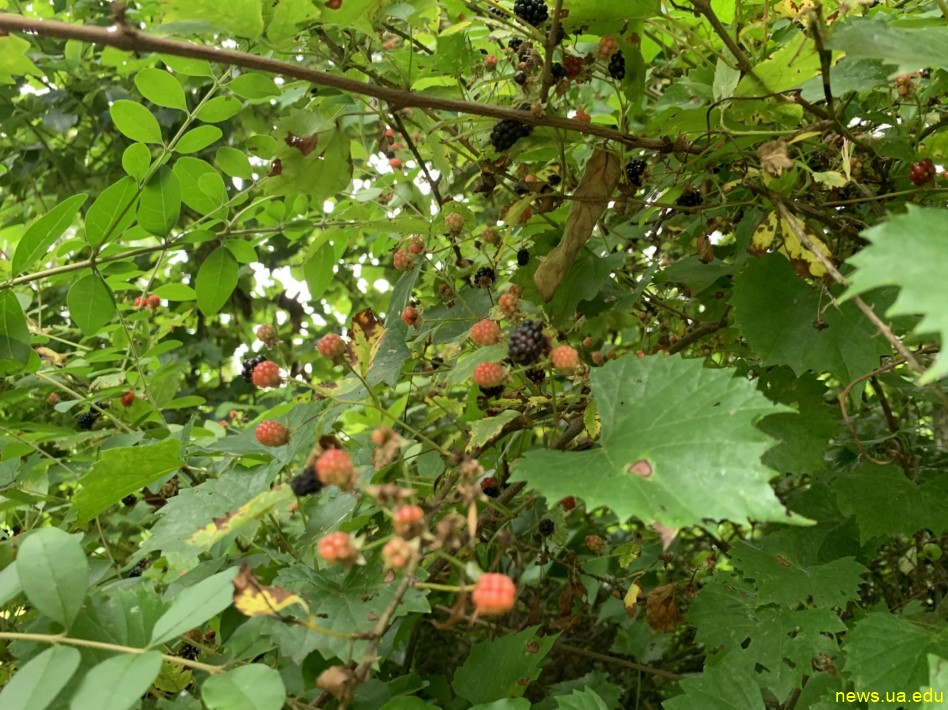
Mushrooms cultivation unlock nutrients for other members of the ecological community
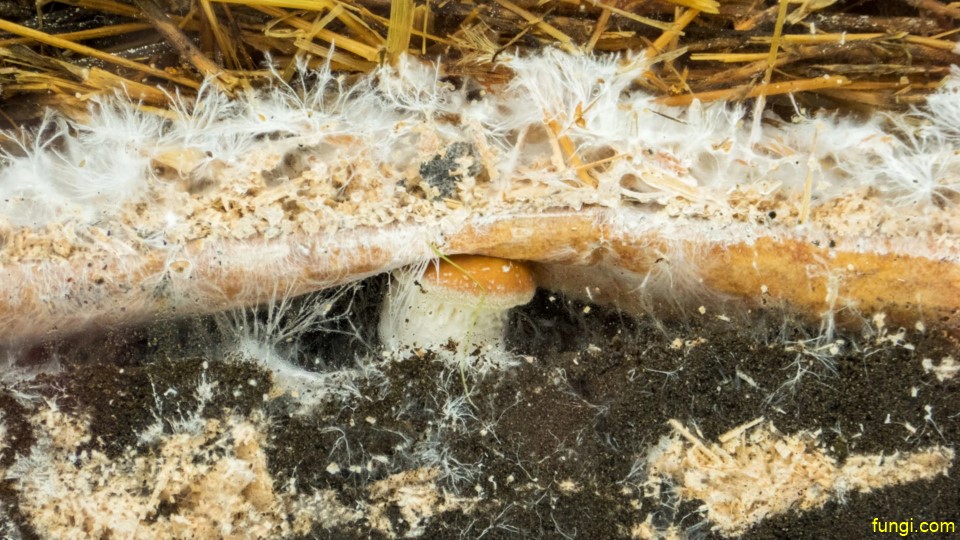
+ Mycelium Layer
The mycelial layer is so important that it should be included in any plan for a food forest. We'll do our best to create a few places for the mushrooms and add another dimension of biodiversity.
Not only are mushrooms a protein-rich food source for humans, but the byproducts of mushroom cultivation release nutrients to other members of the ecological community.
By rapidly returning nutrients to the ecosystem, the life cycles of plants, animals, insects (bees) and soil microflora are enhanced.
A mycelium layer refers to the network of thread-like structures called hyphae that make up the vegetative part of fungi. These hyphae grow and intertwine to form a dense mat of mycelium that can extend over large areas.
Mycelium layers are important for the growth and reproduction of fungi. They help the fungus to absorb nutrients from the environment, and they also provide a surface for the formation of reproductive structures such as fruiting bodies or mushrooms.
Mycelium layers can be found in a variety of environments, including soil, decaying plant material, and the bodies of living or dead organisms. They play an important role in the nutrient cycling and decomposition processes that are crucial for the health of many ecosystems..

